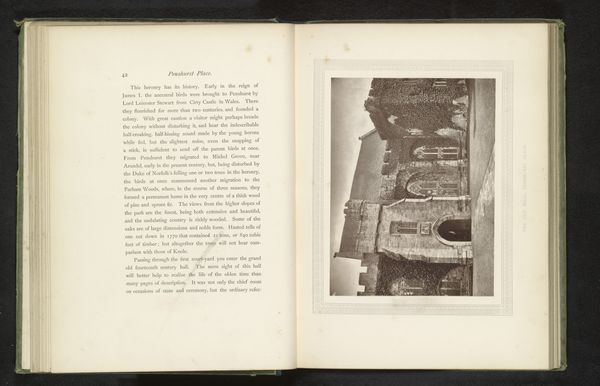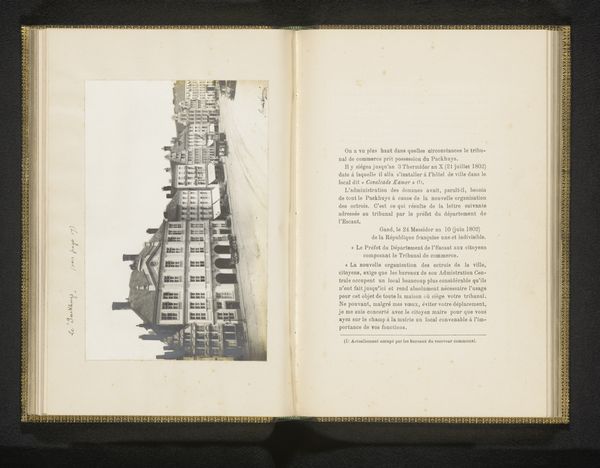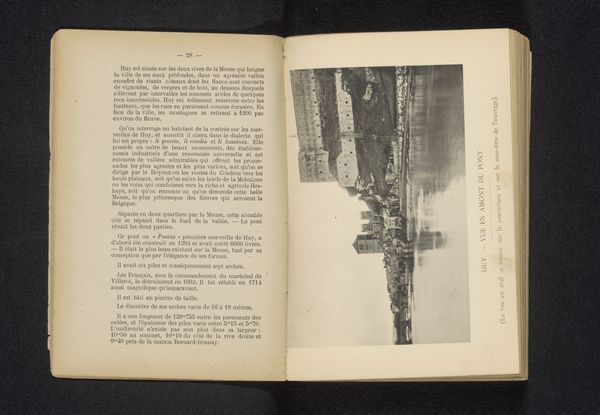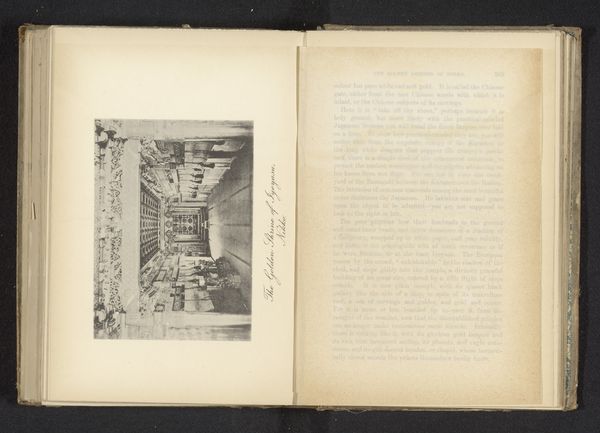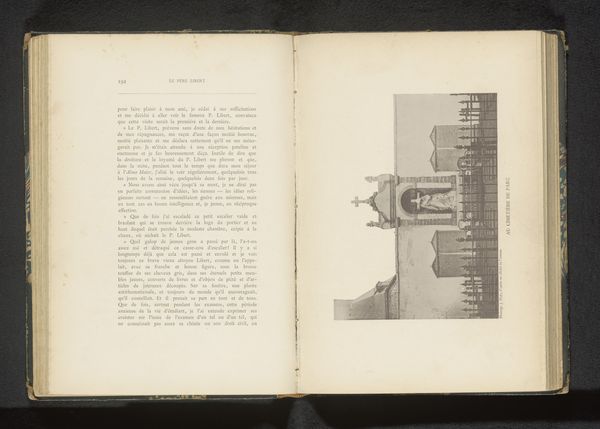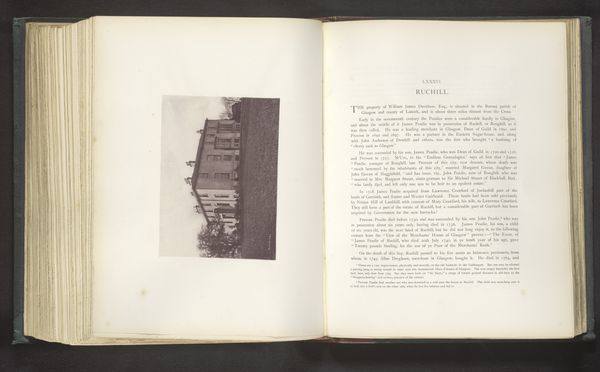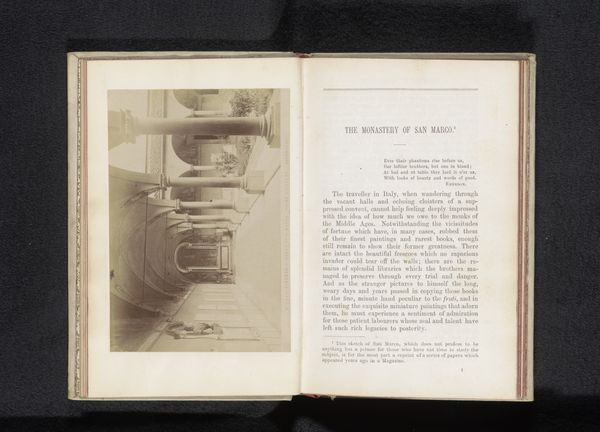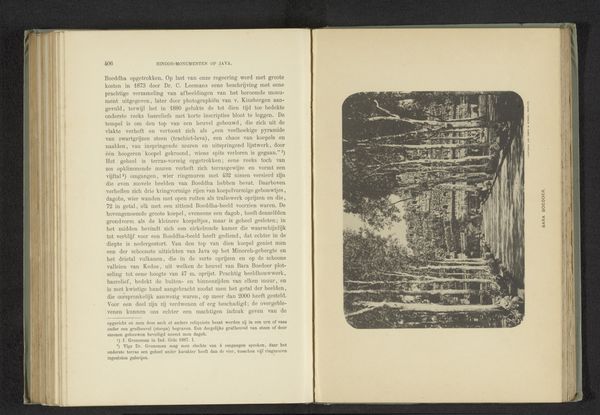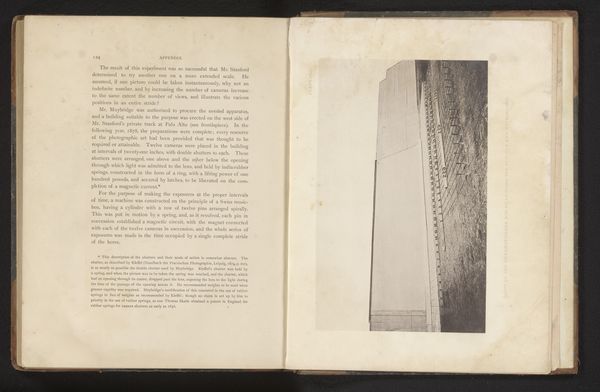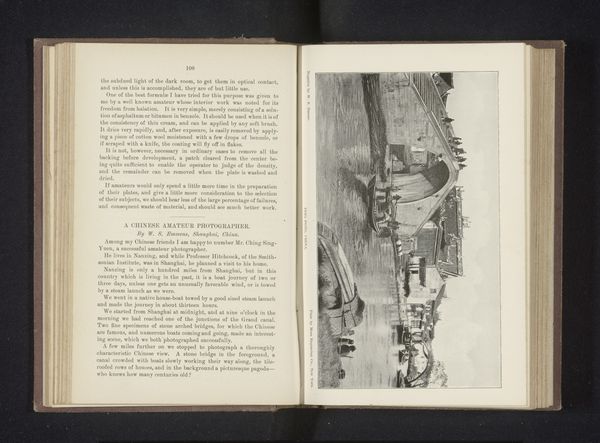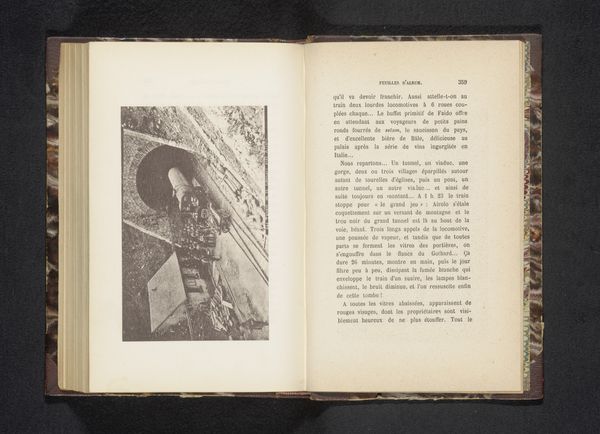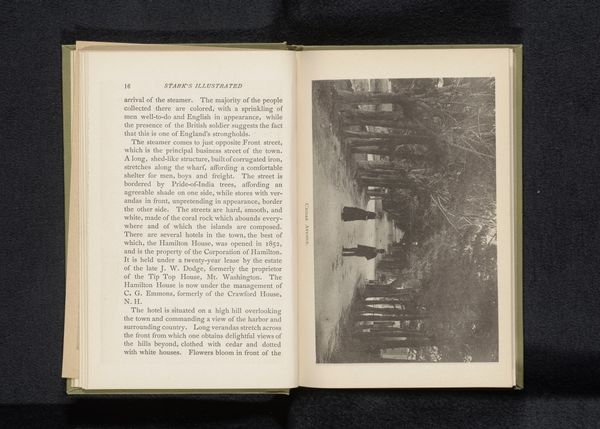
print, photography, collotype
# print
#
french
#
book
#
landscape
#
photography
#
collotype
Dimensions: height 103 mm, width 158 mm
Copyright: Rijks Museum: Open Domain
Curator: I am struck by how dreamlike this collotype seems, capturing what's written as "Gezicht op Château de Vierset." It feels more like a memory than a depiction, perhaps intentionally, being before 1890. Editor: What you interpret as dreamy, I see as rooted in its time. Photography, especially when reproduced like this, served a purpose: to document and disseminate visual information about places that were perhaps inaccessible to many. But who had access, is the deeper question, right? Curator: That makes sense. I didn't even notice that it’s an image within a book. What strikes me first is this strange orientation, where the chateau almost tumbles into the forest. Did they mean to present it this way? Editor: It disrupts conventional perspective, absolutely, perhaps inviting us to consider our relationship to these structures of power and privilege, which often present an imposing façade, both literally and figuratively. What stories are purposely erased? Curator: Well, visually speaking, it's intriguing. There’s a texture to the light, almost like the collotype struggles to catch all the nuances. The way the image is rendered allows the structure to almost dissolve as it blends with its background. Is this symbolic? The fleeting nature of aristocracy perhaps? Editor: Symbolism is embedded everywhere in this book! The choice of representing the Chateau de Vierset not as an emblem of historical pride, but as a landscape element suggests an interest in subverting the dominant narrative of the old landowning families during its time. I see critique—through an emphasis on landscape, and the ways architecture is engulfed and ultimately undone, by nature itself. Curator: Still, I enjoy the mystery—the blurring of lines between the natural and the constructed. A place to get lost in the detail, like a daydream. A strange artifact, really. Editor: Precisely. And it compels us to ask, what’s missing, who benefits, and which perspectives go unacknowledged, if not erased in our historical landscape?
Comments
No comments
Be the first to comment and join the conversation on the ultimate creative platform.
